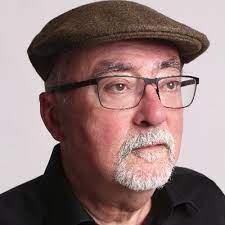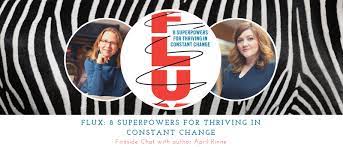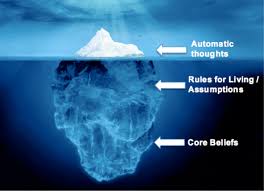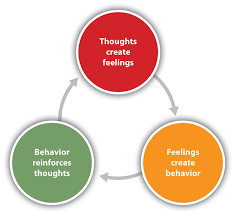
Social Therapy
Apologies in advance.
This started out as a simple blog post to try out an idea that I think has legs, definitely needs a lot more thought, and might be controversial.
But, as you’ll see two seemingly random events complicated things, convinced me that the topic was even more important than I had realized, and (alas) made the post a lot longer than I had originally planned.
On Social Therapy
As regular readers know, I’m writing a book about (mostly) young activists who are “connecting the dots” across issue-based and ideological lines which is morphing into a movement to help such people succeed.
I want to use this post to try out what I think will be one of its most important points. And I know that it will be one its most controversial point.
If we are going to change the world, we have to change ourselves first. Lasting social change that even comes close to achieving my hoped-for paradigm shift has to be anchored in new ways of thinking about ourselves and our role in society.
That, in turn, will require something akin to a society-wide version of what one goes through in individual therapy.
We don’t all need to spend a decade in therapy (as I have) in order to make a difference in our communities or countries, but there are ways in which tools that were designed to change us as individuals could and should shape the ways we go about trying to change the world, too.
Before I get into the specifics, I want to make one thing clear. It’s not just the “clients” we work with who have to go through this “therapy.”
We have to change, too,
If I’m right, we activists have an inescapable responsibility to live the values we advocate for in all aspects of our lives. So, I want to use this blog post to make that point more explicitly than I ever have been before, at least in print.
I’m going to use Cognitive Behavioral Therapy (CBT) as my jumping off point, but I could have picked any of a number of tools that therapists use.
They would all lead me to same conclusion—social change begins with personal change. And first and foremost, that starts with the very people who think of themselves as change agents.
A Bizarre New Connection
The first of those unexpected events was undoubtedly the most bizarre connection I’ve made in a lifetime spent connecting people.
On Sunday, I was working on this post and hit a mental wall.
 So, I took a break and checked my email. In my inbox was a message from Jim Coyne about an upcoming high school reunion. I only had the vaguest recollection of Jim and had not thought of him since we graduated in 1965. I was getting ready to trash it when I happened to notice that he ended with:
So, I took a break and checked my email. In my inbox was a message from Jim Coyne about an upcoming high school reunion. I only had the vaguest recollection of Jim and had not thought of him since we graduated in 1965. I was getting ready to trash it when I happened to notice that he ended with:
Espresso, tea, and scotch or bourbon are available from an emeritus professor who promises not to talk too much.
I was shocked. The combination of Jim Coyne+emeritus professor was about as implausible as Chip Hauss+NBA player.
As is my wont, I looked him up. He is a world class clinical psychologist who has taught in medical schools around the US and in Europe.
As is my wont again, I fired him an email saying among other things that I was writing this blog post and social therapy in general and cognitive behavioral therapy in particular. His email back started “holy shit” since he works on some of the same issues and had worked quite closely with the originator of CBT, Aaron Beck, even though they had started out as rivals.
Flurries of emails followed as did a Zoom meeting which opened up all kinds of things. Even though we don’t look at all of the issues I care about in similar ways, talking with him did open new intellectual doors for me, including the importance of reframing both the problems we face and the ways we can deal with them which will be at the heart of the second half of this post and of my book.
Social Therapy in a Time of Flux
Then I met April Rinne, author of the new book, Flux which she discussed with my friends at Zebras Unite on Tuesday. She has been on my radar screen for some time, since another childhood friend, Dick O’Neill, first told me about her work.
 Flux makes the case that we live in a time of flux which she sees both as a noun (to be constantly in motion, often uncomfortably so) and as a verb (to flux is to find your place in the flow).
Flux makes the case that we live in a time of flux which she sees both as a noun (to be constantly in motion, often uncomfortably so) and as a verb (to flux is to find your place in the flow).
In this book as a whole, she tries to help readers cope with a world that is constantly in flux in both senses of the term. In the talk, April talked about four questions about flux that are on the top of her mind these days.
- What should we do when we don’t know what to do?
- Many of say we love change, but don’t we embrace changes we can manage and even profit from but actually do our best to avoid the ones that eddy out of our control?
- How can we find a place for ourselves in the future that we’re trying to build?
- What would you do today if you knew that you were going to die tomorrow?
The book (which I had already read) and her questions, too, made me step back from this post and realize that I was on to something when I hit that mental bump in the road and read Jim’s email. Like Rinne, I’m convinced that every one of us has to start answering those questions for ourselves.
As Rinne also said the other day, we also have to think about change in fractal terms which gets mirrored across multiple levels from our own personal self-awareness outto a shift in global cultural norms. In other words, we have to find a way to move from what many of us have learned undergoing personal therapy and turn it into to what I was already calling for lack of a better term, “social therapy.”
From Personal to Social Therapy
As anyone who has worked with multiple therapists knows, they have no shortage of tools at their disposal. When my therapist suggested Cognitive Behavioral Therapy for our work together, I realized that it also made sense as a jumping off point for the kind of social therapy I just mentioned.
CBT was initially developed by psychiatrist Dr. Aaron Beck and, later, his daughter Dr. Judith Beck. It is seen as one of the most effective therapeutic tools especially for patients who seem irrevocably stuck in habits that are more psychological than physical in origin.
There is no need to go into the details of how and why CBT works here. Besides, I couldn’t do that even if I wanted to, since I’m a political scientist and peacebuilder—and not a trained therapist.
 Even at a superficial level, two of its features are useful here. First, it is designed to help individuals deal with chronic or longstanding problems, which are good words to use in describing the society-wide issues we face today beca use it asks patients to move from thoughts to feelings and then on to actions. Second and even more importantly, there is a significant overlap between CBT and appreciative inquiry, scenario planning, and other tools social change agents often use that are based on the assumption that individuals (or societies) can change for the better if they focus on some sort of constructive long term goal and can take concrete steps towards reaching it.
Even at a superficial level, two of its features are useful here. First, it is designed to help individuals deal with chronic or longstanding problems, which are good words to use in describing the society-wide issues we face today beca use it asks patients to move from thoughts to feelings and then on to actions. Second and even more importantly, there is a significant overlap between CBT and appreciative inquiry, scenario planning, and other tools social change agents often use that are based on the assumption that individuals (or societies) can change for the better if they focus on some sort of constructive long term goal and can take concrete steps towards reaching it.
For our purposes, the key lies in one of CBT’s core concepts, which the Becks refer to as automatic thoughts. These are the individual’s first and almost instinctual reactions to a troubling situation which often lead them down a less than constructive path. Over time, those thoughts recur so often that they become ingrained habits. They can even come to resemble an addiction which, as those of us who have struggled to quit drinking or smoking know, can seem impossible to break.
The CBT therapist helps the patient reframe those thoughts and open the mental door to new ways of thinking and acting. If I’m right, those same tools can be used when it comes to the kind of large scale social change that the dot connecters work on because they can help communities or even countries break away from their collective automatic thoughts and the less than constructive behaviors that led us to all of the social, economic, political, and environmental problems we face in the 2020s.
To see how that can happen, let me work you through a worksheet which my therapist and I have used that also also has implications for the way our society needs to change.
The first side of the form asks patients to think about situations that have set them off in a less than constructive direction, some of which have clear society-wide counterparts today, including:
- All or nothing thinking
- Catastrophizing
- Downplaying or even ignoring positive things that have happened
- Emotional reasoning when the use of evidence might be helpful
- A tendency to (over)generalize from a specific problem
- Pointing the mental finger and blaming “others” for our problems
- A propensity toward tunnel vision in which it is hard to even envision alternatives to the status quo.
The second side of the page is the actual worksheet in which the therapist asks the patient to respond in writing to a set of questions which then serve as the jumping off point for subsequent therapeutic sessions through which, in time, people deal with the parts of their mental icebergs that lie below the surface as in this image which we peacebuilders also tend to use, albeit with different labels above and below the ocean’s surface.
What is the situation? Let’s start with the easiest—the problem you face. In my case, I did not need my doctor’s help in diagnosing the social and political problems we face. After all, I’ve been doing that for years. The same is probably true for you. Still, I’ve found that the actual act of writing about the problem I am facing (personally or politically) or describing it out loud gives it a concrete reality which is quite different from the looming, ill-defined, metaphoric sword of Damocles sitting menacingly over my head that triggers automatic thoughts—and worse.
How does it make me feel? What makes me think that those thoughts might be true? What makes me think that the thought is not true or not completely true? This is where the idea of automatic thoughts comes into play analytically. Often, we react to difficult situations we encounter in the same ways, without doing much serious intellectual or emotional analysis of why we do so. Here, the Becks argue the key step is to name the feelings and emotions that lead us to act in those habitual ways. Or, to the use the language I will use throughout the book, it helps us identify the underlying paradigm or mind set that we use in shaping our behavior. Or again, these are the thoughts that lead to the kinds of reactions listed in the bullet points three paragraphs ago.
The Becks and my therapist are only professionally interested in an individual’s automatic thoughts. As a dot connecter, I’m more interested in their collective equivalents—the cultural norms that go a long way toward determining how we react to whatever situation we find ourselves in. And those socially and culturally determined automatic thoughts are the ones that keep us paralyzed or keep us trying to solve new problems using old and outdated “tools” while not even considering alternatives.
And we do have society-wide equivalents of automatic thoughts, including might makes right, nice guys finish last, or we’re all looking out for “number one,” to name just a few. Many of those gut reactions both make it hard for us to see alternatives to the status quo despite the fact that there is at best limited evidence that they are accurate.
CBT appealed to me initially because I’m an empirical social scientist and like to base my interpretations and actions on concrete evidence. I suspect that this part of my background helped my therapist decide to use it with me. That same logic suggest how and why it can be useful in our efforts to convert personal growth into social change.
My therapist helped me see that many of my automatic thoughts about, say, my lack of self-worth were not grounded in reality. Then, she helped me see the data that I normally paid very little attention to that suggest that I have some assets, including my ability to connect the dots when it comes both to ideas a people.
As I will also show in the book, the dot connecters start with the assumption that many of our social automatic thoughts or the values of our underlying paradigms or mindsets just aren’t working the way they are supposed to. In the literal sense of the term, they have become obsolete because they no longer perform the function for which they were initially designed. And that is often the case during a time of transition from one paradigm to the next like the one we are living in now. As at the individual level, the key here is to work through the evidence that does and does not suggest that the automatic thought is accurate.
What’s another way way to look at this? And now we can add the Becks’ and Coyne’s idea of reframing the question into the mix which, not coincidentally, is a commonly used term in peacebuilding. In CBT’s version, patients are asked to think about alternative behaviors they could try once they have surfaced the fact that their automatic thoughts and the behaviors they lead to are not their only optionss. The examples that the Becks use come from their practices in which they spent a lot of time with chronically depressed patients. But, if–as I often joke about myself–I was chronically politically depressed for much of 2020, this version of CBT asks me to envision alternatives on specific issues that might work. And then to consider larger, paradigm-level ways in which things could change.
Or, in taking the model from the individual to the community or national levels, how do we help our fellow citizens see the world differently? How do we help them expand the number of options they things are available to them?
Here, the idea of the Overton Window is particularly helpful. Initially developed by the conservative analyst Joseph Overton in the 1990s, it encourages activists to broaden the “window” of acceptable ideas in mainstream debate over any given issue. Following his premature death in an ultralight aircraft accident, his colleagues used the idea
There is every reason to believe that the kinds of organizations discussed in this book can the same thing for the kinds of issues they promote which, of course, are quite different from the ones Overton focused on.
What could happen if I change my thinking? What’s the best thing that could happen? What will probably happen? What’s the worst thing that could happen? This series of questions leads the patient to consider the likely outcomes of pursuing the new kinds of behavior that emerge from reframing. No one can ever know what will happen as a result of taking a risk either in in an interpersonal or a political relationship. As my doctor helped me reframe my own self-image on the basis of the evidence I had (and had previously chosen to ignore), it became clear that what once looked like scary risks might not have been all that scary after all. And, once I took a few of them, I discovered that the new behavioral options worked!
That said, this is one of the areas in which it is not easy to transfer what one person learns to a larger group, especially when and if that group numbers in the millions or billions. Readers trained in the social sciences will immediately see how things like collective action, commons, and related impediments to cooperative behavior matter in this respect.
Nonetheless, the logic behind these four questions applies and larger units as well. As with individuals, reframing cognitive processes and defining new options are just the start. We also have to act on them. Our habitual reliance on the degenerating cycles that automatic thoughts can paralyze us as individuals, but their impact is magnified to some undefined by exponential effect when we shift our attention to large groups.
Still, thinking about the “best thing that could happen … if I changed my thinking” can point us toward what systems and complexity theorists call a North Star or long-term goal we can work toward. In other words, by drawing our attention toward what can go well as well as to what could derail our efforts, a societal version of CBT can help identify the bright spots.
 What would I tell my friend if this happened to him or her? This is the question I paid the least attention to early on in my own experiment with CBT until I realized that it was the one (sort of) trick question in the list. The stories we tell others will help give shape to the cultural shift that the book and the whole connecting the dots community is aiming to produce.
What would I tell my friend if this happened to him or her? This is the question I paid the least attention to early on in my own experiment with CBT until I realized that it was the one (sort of) trick question in the list. The stories we tell others will help give shape to the cultural shift that the book and the whole connecting the dots community is aiming to produce.
But—and here is where the trick question side of things comes into play—the stories we tell our friends are also the stories we can tell ourselves. If I understand the logic behind CBT properly, therapists are really trying to help their patients change their own personal narratives, and asking them to tell those stories as if they were talking to friends is a step along the way toward doing so. Whoever you tell them to, creating new narratives reinforces new cognitive and behavioral patterns because the stories we use to describe our actions matter.
In my own case, I would often, for example, use my teaching (which is really a form of story telling) to empower my students. Meanwhile, the story I was telling myself about myself and the situation I found myself in was rather different. Learning how to align the two sets of stories didn’t change what I did in a classroom or in running a workshop, but it did lead me to feel a lot more confident about my abilities.
The translation from individual to society is not an easy to make here, too. Still, there is something to be said about narratives that emphasis change that is already taking place—including in dot connecting—rather than emphasizing what I called Doom and Gloom 101 which is such a big part of political discourse today.
Simply telling new stories, of course, is not enough. At that point, it becomes what psychologists refer to as magical thinking that has little or no grounding in reality/ Still, if I start telling my friends and myself stories about how social change is already happening, it becomes a lot easier to identify the bright spots that are already out there and build on them.
What should I do now? CBT practitioners specialize in treating patients whose problems are typically deeply engrained but not genetic or physical in nature. In other words, they tend to focus on counterproductive habits that an individual undergoing treatment can change. So, their impact is measured by the degree to which their patients both strike out in new directions and succeed in doing so which, in turn, means breaking outmoded and destructive habits.
The same holds for entire societies.
It Takes Time and Effort
Taken together, the points in this post point toward a single conclusion. Changemakers and the organizations they form would benefit from putting themselves through a collective version of CBT in which they:
- Bring their collective version of the individual’s automatic thoughts to the surface
- Understand both their origins and the ways that they keep communities, organizations, and societies as a whole form reaching desired goals or what the CBT specialists call preferred outcomes
- Envision alternatives to the status quo and chart plausible paths for heading in those directions
- Reframe the initiatives they can take and act on that reframing.
In the end, that leads to perhaps the most important lesson we can learn from CBT or any other successful therapeutic tool.
CBT advocates understand that reframing and the other steps they recommend are not a therapeutic magic wand that immediately makes everything better. It takes practice because those automatic thoughts are deeply engrained and undergird habits that often have been in place and causing harm for decades or longer. In other words, getting CBT right takes practice.
It takes time because we have to learn how to break those habits and definitively replace them with new ways of thinking and acting. That doesn’t happen with a single decision or insight into an individual’s automatic thoughts or a society’s cultural norms.
As the Becks argue in their books and in the trainings that they give for therapists, breaking old habits and abandoning ingrained automatic thoughts requires practice and therefore takes a lot of time.
I’m pretty sure that I’m on something here.
At the same time, I’ll be the first to admit that I have a long way to first in my personal growth and, then, in the ways I try to change the world.
Therefore, even more than normally, comments and criticisms are more than welcome.
Email me at chip@charleshauss.info
The views and opinions expressed in this article are those of the author and do not necessarily reflect the official policy or position of the Alliance for Peacebuilding or its members.
Also published on Medium.





